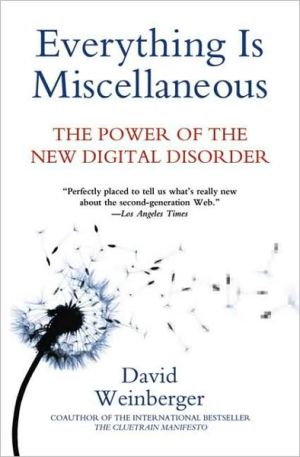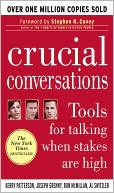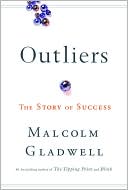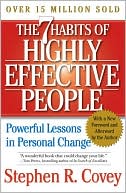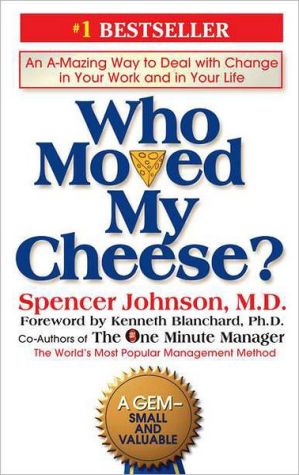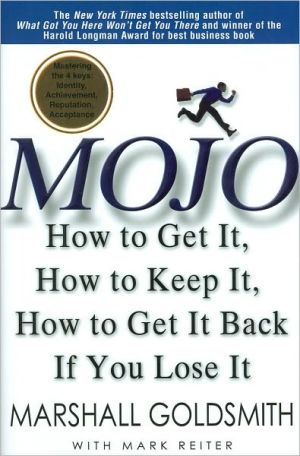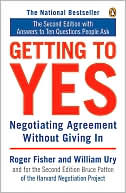Everything Is Miscellaneous: The Power of the New Digital Disorder
Business visionary and bestselling author David Weinberger shows how the digital revolution is radically changing the way we make sense of our lives Human beings are information omnivores: we are constantly collecting, labeling, and organizing data. But today, the shift from the physical to the digital is mixing, burning, and ripping our lives apart. In the past, everything had its one place—the physical world demanded it—but now everything has its places: multiple categories, multiple...
Search in google:
Business visionary and bestselling author David Weinberger shows how the digital revolution is radically changing the way we make sense of our livesHuman beings are information omnivores: we are constantly collecting, labeling, and organizing data. But today, the shift from the physical to the digital is mixing, burning, and ripping our lives apart. In the past, everything had its one place—the physical world demanded it—but now everything has its places: multiple categories, multiple shelves. Simply put, everything is suddenly miscellaneous.In Everything Is Miscellaneous, David Weinberger charts the new principles of digital order that are remaking business, education, politics, science, and culture. In his rollicking tour of the rise of the miscellaneous, he examines why the Dewey decimal system is stretched to the breaking point, how Rand McNally decides what information not to include in a physical map (and why Google Earth is winning that battle), how Staples stores emulate online shopping to increase sales, why your children's teachers will stop having them memorize facts, and how the shift to digital music stands as the model for the future in virtually every industry. Finally, he shows how by "going miscellaneous," anyone can reap rewards from the deluge of information in modern work and life.From A to Z, Everything Is Miscellaneous will completely reshape the way you think—and what you know—about the world. Publishers Weekly In a high-minded twist on the Internet-has-changed-everything book, Weinberger (Small Pieces Loosely Joined) joins the ranks of social thinkers striving to construct new theories around the success of Google and Wikipedia. Organization or, rather, lack of it, is the key: the author insists that "we have to get rid of the idea that there's a best way of organizing the world." Building on his earlier works' discussions of the Internet-driven shift in power to users and consumers, Weinberger notes that "our homespun ways of maintaining order are going to break they're already breaking in the digital world." Today's avalanche of fresh information, Weinberger writes, requires relinquishing control of how we organize pretty much everything; he envisions an ever-changing array of "useful, powerful and beautiful ways to make sense of our world." Perhaps carried away by his thesis, the author gets into extended riffs on topics like the history of classification and the Dewey Decimal System. At the point where readers may want to turn his musings into strategies for living or doing business, he serves up intriguing but not exactly helpful epigrams about "the third order of order" and "useful miscellaneousness." But the book's call to embrace complexity will influence thinking about "the newly miscellanized world." (May)Copyright 2007 Reed Business Information
Everything Is Miscellaneous\ The Power of the New Digital Disorder \ \ By Weinberger, David \ Times Books\ Copyright © 2007 Weinberger, David\ All right reserved.\ ISBN: 9780805080438 \ \ \ Prologue\ \ Information in Space\ \ “Absolutely not.”\ \ I’ve apparently begun by asking Bob Medill the wrong question: “Don’t you put the most popular items in the back?” He could have taken it as an insult, for it’s a customer-hostile technique many retailers use to force shoppers to walk past items they hope they’ll buy on impulse. But the soft-spoken Medill is confident in his beliefs. Besides, he’s been asked that before. It’s a rookie question.\ \ “No,” he says, looking out over the Staples office supply store he manages. “In front are the destination categories because that’s what our customers told us they want.” His arm sweeps from left to right, gesturing to the arc of major sections of the store: “Paper, digital imaging, ink and toner, business machines, and the copy center.”\ \ It’s two o’clock in the afternoon, but we have the place to ourselves. Even if a customer wanted to buy something, no one is at the cash register. If you need help with your purchase, no “associates”—Staplesese for “sales assistants”—are available. Medill is unconcerned. That’s the way it’s supposed to be. We’re in the Prototype Lab, a full-sized store mock-up at the company’s headquarters in an office park in Framingham, Massachusetts.\ \ The site has nothing of a Hollywood set about it. It’s all real and fully stocked, from the twenty-four-pound paper marked on sale to the blister-packed pens hanging neatly side by side. Eight people work there full-time, which is less than a real store’s typical complement of twenty-nine but still no small expense. Yet it’s worth it because, despite the aisles of pens and the pallets of paper positioned by forklifts, the Prototype Lab is actually about information. Every day Bob Medill and his staff work on strategies to overcome the limitations of atoms and space so customers can navigate a Staples store as if it were pure information.\ \ That’s not the way Medill would put it. From his point of view, the Prototype Lab is a testing ground for making shopping at Staples easier for customers. That by itself puts him in the vanguard of merchandisers. More typical merchandisers use physical space against customers so that customers will spend more money than they intend. It’s a science retailers know well. Supermarkets stock popular items, such as milk and bananas, in the back of the store to take advantage of the way physical space works: To get from area A to aisle C, we have to go past shelf B, which just happens to have a sign announcing a special on something we didn’t come in for. Likewise, you’ll find doggie treats below eye level because it’s something kids are more likely than their parents to put in the cart. When Medill talks about making it easier for Staples’ customers to get out of the store fast, he’s a bona fide revolutionary.\ \ “Customers fall into two buckets,” says Liz McGowan, Staples’ director of visual merchandising. “People who feel that asking for help is a personal failure and those who don’t.” Despite what comedians tell us, the dividing line is not based on gender. “My mother is in the first bucket,” she says. McGowan is data-driven, so she knows the precise volume of the buckets. “Thirty-two percent ask associates. Twenty-four percent use signage. Forty percent already know where things are.” It’s the 60 percent who need help that determine the informational layout of the store. In the Prototype Lab, that’s known as “way-finding,” and it’s where how people think meets the way their bodies deal with space.\ \ “We learn by watching our customers’ eyeballs,” Medill says. Customers enter the store and move nine to twelve feet in, and then they—we—“stand and scan.” That’s why, unlike most stores, Staples doesn’t put much signage in the entranceway. Instead, it places signs over the most popular destinations, and signs for subcategories under those signs, like a map of continents divided into countries and then into states. Gesturing at the cleanliness of the design, Medill says, “Originally we had ‘focals,’”—signs that call out special offers—“but they blocked eyeballs.” In the retail world, the point of “focals” is to interrupt the logical order of the store, bringing some exceptional, can’t-be-missed offer to your attention. But focals are also concrete objects, so they not only grab your attention, they also physically obscure information about the store, like a map that puts a big “McDonald’s here!” label that obscures most of downtown Poughkeepsie. That’s just the way eyeballs work. Because a sign is not information if it can’t be physically seen, the average height of human eyeballs also determines the height of the shelves. “By having a store that’s mostly low, it’s easily scannable,” says Medill.\ \ Eyeballs also determine how much information goes on the product description placards that line the shelves, prefacing the products themselves. “With twenty-twenty vision, you have to be able to read it one and a half feet away,” explains McGowan. “Three bullets is pretty good,” adds Medill. “Five is too many.” If human visual acuity were better, there would be more information on the signs, and if we mixed our genes with giraffe DNA, the shelves would be twenty feet tall. And if the shelves were twenty feet tall, a typical Staples might be able to stock 15,000 items instead of 7,200. But why dream? Physical stores are laid out for a species that rarely has eyeballs more than six feet off the ground.\ \ In a physical store, ease of access to information can be measured with a pedometer, and each step is precious. “People come in with lots of ways of identifying printer ink,” Medill says. “An old cartridge, an ID number, a printer number, a label from the box.” Staples created a catalog of all available printer inks, and gave it its own attractive kiosk. Yet only 7 percent of customers used it. “It was too far away from the inks,” Medill explains. “Now we’ve broken the catalog into pieces and embedded each piece with the relevant merchandise.” If you have an Epson printer, you’ll find the catalog of Epson inks next to the Epson segment of the ink shelves. “Once we integrated the catalog, twenty percent used it,” reports McGowan, the keeper of the numbers.\ \ The purely informational layout of the Prototype Lab is warped by the brute fact that in the physical world, two objects cannot occupy the same space at the same time. As we arrange items in space, we’re also determining the time it will take to reach them. Eliminate this basic fact of the physical world and there’d be no need for the Prototype Lab.\ \ Of course, we could try stocking the same item in many places throughout the store. But most stores, including Staples, don’t like to do that. I ask Mike Moran, the person in charge of figuring out the spatial relationships, for an example of an item that’s stocked in more than one place. “Cables,” he responds immediately. “What do I use them for? For printing,” he says, assuming the customer’s point of view. So cables are in with printers. But they’re also in a separate cable section. Yet the same argument could be made for stocking blank CDs and DVDs in lots of places. Instead they’re confined to a display toward the start of the arc of destination areas Medill had gestured to. Why aren’t they also stocked next to the devices that record onto them? Why not also next to paper, since both are ways of recording information? Why not also with software, since they’re both CDs? For that matter, why not put pens with paper, with notebooks, with the yellow stickies, and with the blank labels? “Operational simplicity,” says Moran. If CDs were put everywhere a customer might want to find them, it would be impossible to make sure that each pile was kept stocked. Besides, it would eat up shelf space, a commodity so limited that in groceries and bookstores, vendors pay for the privilege of having their goods placed well. Destination areas are the only places where there’s double stock because, Moran says, “If I leave the store with a printer but not cables, paper, and ink, the product isn’t usable, and I come back annoyed.”\ \ Having to come back: the victory of space and time over the human ability to remember what goes with what. Many of us find it unreasonably irritating to have to make a second trip to pick up what we forgot the first time—what we forgot because the store-as-information failed to help us remember. Information is easy. Space, time, and atoms are hard.\ \ Medill’s crew doesn’t think of it this way, but they’re in a battle. Their constant enemy is the physical, three-dimensional world itself. Software programmers would say that the people at the Prototype Lab are “hacking the physical”—finding clever ways around the limitations built into the system. The limitations are so much a part of our everyday world that we don’t even recognize them as such. For example:\ \ In physical space, some things are nearer than others. That’s why Liz McGowan worries about way-finding: She wants us to be able to get everything on our shopping list with the minimum number of steps.\ \ Physical objects can be in only one spot at any one time, so McGowan and Moran have to figure out which one place—or two at the maximum—to put items, even though it’d be easier for customers if anything they wanted was always within arm’s reach.\ \ Physical space is shared, so there can be only one layout, even though we all have different needs. If you’re in a wheelchair, McGowan’s careful organization of signs at average height isn’t going to work very well for you. Or if you go to Staples primarily for school supplies, you’ll probably find the store’s choice of what counts as a destination area irrelevant, since it doesn’t include crayons and three-hole Harry Potter notebooks.\ \ Human physical abilities are limited, so the amount of information provided to us is constrained by our ability to see; you wouldn’t want the informational signs to be so detailed that they obscured the products themselves.\ \ The organization of the store needs to be orderly and neat. If things are out of place, they can’t be found; the physical mapping of the store needs to reflect the organization of the information, and that organization needs to be as simple as possible. A messy store is a disordered store is a failed store.\ \ These limitations mean that no matter how well Medill and his group do their jobs, most of what’s in Staples is just in our way. If I come in with a shopping list of fifteen items, the other 7,185 items Staples stocks not only are irrelevant, they hide what I’m looking for. If, magically, those fifteen items were all that was in the store when I got there—and that was true each time I came, no matter what was on my list—I could go to a single shelf at the front of the store, sweep them into my basket, and be done with it. There wouldn’t be any need for McGowan’s way-finding studies or for Moran’s careful consideration of what should be placed next to what.\ \ But we all know how reality works, so why worry about what might be possible in some sci-fi alternative universe?\ \ Because the alternative universe exists. Every day, more of our life is lived there. It’s called the digital world.\ \ Instead of atoms that take up room, it’s made of bits.\ \ Instead of making us walk long aisles, in the digital world everything is only a few clicks away.\ \ Instead of having to be the same way for all people, it can instantly rearrange itself for each person and each person’s current task.\ \ Instead of being limited by space and operational simplicity in the number of items it can stock, the digital world can include every item and variation the buyers at Staples could possibly want.\ \ Instead of items being placed in one area of the store, or occasionally in two, they can be classified in every different category in which users might conceivably expect to find them.\ \ Instead of living in the neat, ordered shelves we find in the Prototype Labs, items can be jumbled digitally and sorted out only when and how a user wants to look for them.\ \ Those differences are significant. But they’re just the starting point. For something much larger is at stake than how we lay out our stores. The physical limitations that silently guide the organization of an office supply store also guide how we organize our businesses, our government, our schools. They have guided—and limited—how we organize knowledge itself. From management structures to encyclopedias, to the courses of study we put our children through, to the way we decide what’s worth believing, we have organized our ideas with principles designed for use in a world limited by the laws of physics.\ \ Suppose that now, for the first time in history, we are able to arrange our concepts without the silent limitations of the physical. How might our ideas, organizations, and knowledge itself change?\ \ That journey will take us from Aristotle to the quiet psychology professor in Berkeley, California, who proved him wrong. From scientists trying to number living things to the businesses that are deciding that if they make their information messier, it’ll be easier to find. From the eighteenth-century encyclopedists who were accused of violating God’s order because they arranged topics alphabetically to the world’s first encyclopedia without editors, page limits, or order.\ \ And here’s a hint about what we will find. As we invent new principles of organization that make sense in a world of knowledge freed from physical constraints, information doesn’t just want to be free. It wants to be miscellaneous.\ \ \ Continues... \ \ \ \ Excerpted from Everything Is Miscellaneous by Weinberger, David Copyright © 2007 by Weinberger, David. Excerpted by permission.\ All rights reserved. No part of this excerpt may be reproduced or reprinted without permission in writing from the publisher.\ Excerpts are provided by Dial-A-Book Inc. solely for the personal use of visitors to this web site. \ \
\ From Barnes & NobleLet's face it; most of us grew up in an orderly world. Fact memorization, atlases, and the Dewey Decimal System mapped out distinct categories of our universe. In those bygone days before cut-and-paste documents and Photoshop, texts and pictures seemed as solid as marble statues. Since the Digital Revolution, mere anarchy seems to be loosed upon the world. David Weinberger's Everything Is Miscellaneous explains why we can't ignore this often unnerving seismic shift. There's no doubt that things are changing: Intellectual disciplines seem to be melting into one another and even retail specialties are reconfiguring. Upscale fashion boutiques are selling CDs, and many coffee shops now resemble laptop centers. The author of Small Pieces Loosely Joined insists that we can find our way in this new order of things. Hypnotic and hip.\ \ \ \ \ Publishers WeeklyIn a high-minded twist on the Internet-has-changed-everything book, Weinberger (Small Pieces Loosely Joined) joins the ranks of social thinkers striving to construct new theories around the success of Google and Wikipedia. Organization or, rather, lack of it, is the key: the author insists that "we have to get rid of the idea that there's a best way of organizing the world." Building on his earlier works' discussions of the Internet-driven shift in power to users and consumers, Weinberger notes that "our homespun ways of maintaining order are going to break—they're already breaking—in the digital world." Today's avalanche of fresh information, Weinberger writes, requires relinquishing control of how we organize pretty much everything; he envisions an ever-changing array of "useful, powerful and beautiful ways to make sense of our world." Perhaps carried away by his thesis, the author gets into extended riffs on topics like the history of classification and the Dewey Decimal System. At the point where readers may want to turn his musings into strategies for living or doing business, he serves up intriguing but not exactly helpful epigrams about "the third order of order" and "useful miscellaneousness." But the book's call to embrace complexity will influence thinking about "the newly miscellanized world." (May)\ Copyright 2007 Reed Business Information\ \ \ Library JournalWeinberger (fellow, Berkman Ctr. for the Internet & Society, Harvard Law Sch.; Small Pieces Loosely Joined) analyzes the Internet's impact on the way we look at the organization of information. As he sees it, the order of things, with the shift from the physical to the digital, is changing: in the physical world, everything had its own place; in the digital world, everything is miscellaneous, fitting into multiple categories. Weinberger describes and assesses the traditional ways of organizing information, including the examples of Dewey, Linnaeus, and Ranganathan, and then moves on to the new order including online digital arrangements of archival photographs from the Bettman Archive to the lists and categories of books and other products on Amazon.com. This thought-provoking book allows readers to step back and take a look at how the digital world impacts how they are and will be looking at arrangements of objects and information. Highly recommended to students and researchers of business, social sciences, education, and library science. It adds another dimension to the latter field and should be recommended reading for its students and faculty.\ —Lucy Heckman\ \ \ \ \ From the Publisher"The world is messy, like it or not, and it's only going to get messier as the Web destroys rules and rule-makers. You can either complain about the chaos and wish for the good old days of order, or you can buy this book and understand why delirious disorder will soon make us all smarter."—Chris Anderson, author of The Long Tail "David Weinberger attacks the complexity of the real world, not by making it simple, but by making it clear. Once he explains how things can be in more than one place at a time—and make sense—you'll never look at a humble index card the same way again."—Esther Dyson\ "From how information is organised, to the nature of knowledge and how meaning is determined, this book is a profound contribution to understanding the impact of the digital revolution."—Richard Sambrook, director, BBC Global News "Everything Is Miscellaneous is a rare and mesmerizing mix: one the one hand, it's an essential guide to latest information age trends, one that will be extremely useful for businesses and consumers alike. But the book is much more than that as well: it's a probing and profound exploration of how we create meaning in the world."—Steven Johnson, author of The Ghost Map and Everything Bad Is Good For You\ "Just when I thought I understood the world, David Weinberger turns it upside down—and rightside up—again. Everything Is Miscellaneous explains the radical changes happening in digital information—and therefore in society as a whole."—Jimmy Wales, founder of Wikipedia and chair, Wikia.com\ \ \
